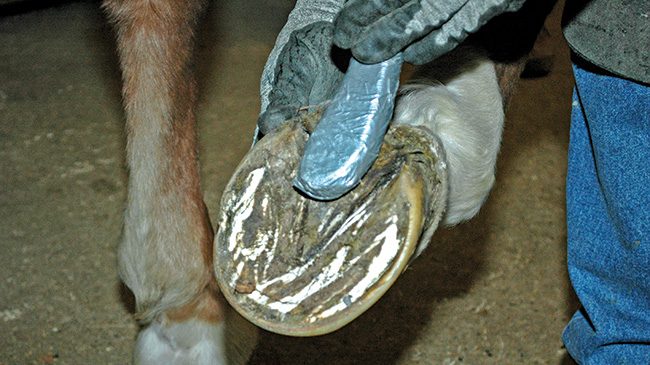American Farriers Journal
American Farriers Journal is the “hands-on” magazine for professional farriers, equine veterinarians and horse care product and service buyers.

More an array of conditions than a specific disease, pain in the heel region of the hoof can be difficult to diagnose, characterize and even name. Yet, without coming to an understanding of the causes of the horse’s pain, that pain may be difficult to alleviate. Management of this condition requires the input and cooperation of veterinarian, farrier and owner.
Tracy Turner, DVM, MS, Dipl. ACVS, of Anoka Equine Veterinary Services, in Elk River, Minn., prefers the term “palmar foot pain” to describe lameness characterized by pain in the back of the foot. “I think that it describes the problem better, that these are lamenesses that are essentially eliminated by palmar digital analgesic blocks (nerve blocks).”
Turner feels that labels such as “navicular disease” or “navicular syndrome” are misleading in that they imply involvement of the navicular bone, although pain in the heel region can originate from a number of other structures as well.
While he characterizes “caudal heel syndrome” as “more appropriate (than either “navicular disease” or “navicular syndrome”) because it refers to the back of the foot,” Turner feels that palmar foot pain is the most precise, since it references a specific diagnostic procedure. “I believe…